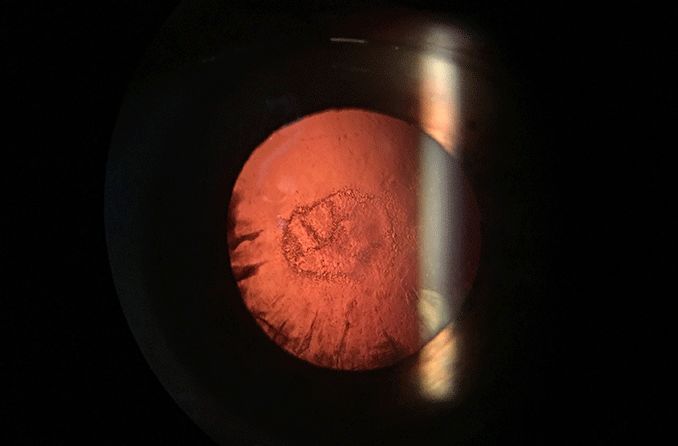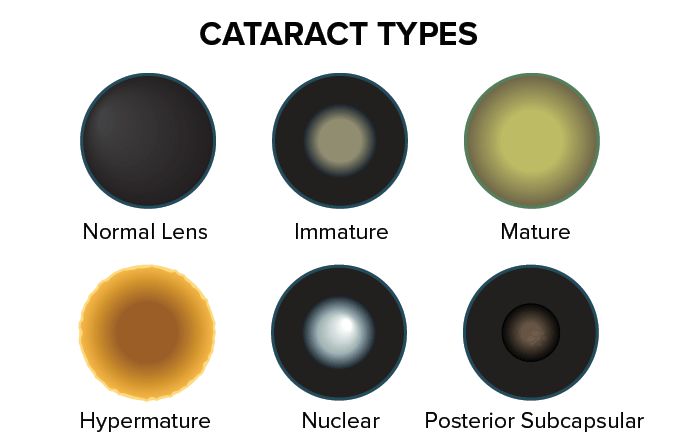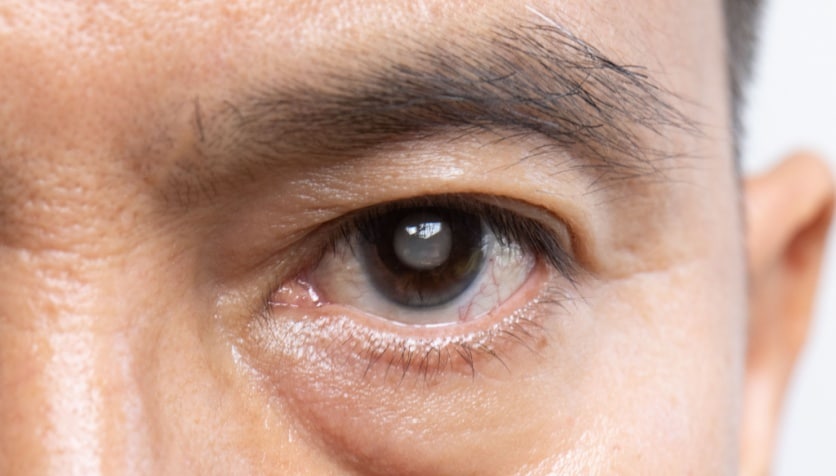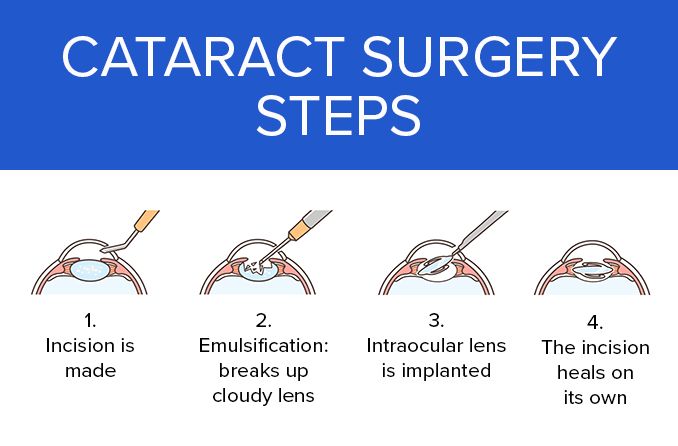What are nuclear cataracts?
Nuclear cataracts are a clouding and hardening of the lens center, resulting in blur, glare and other changes in vision. They are the most common type of cataract. In a study of people aged 75 years and older, the occurrence of nuclear cataract in at least one eye was 40%.
Nuclear cataracts start as nuclear sclerosis. This is a normal hardening and yellowing of the lens with age. As nuclear sclerosis progresses and the lens becomes more hardened and opaque, it is classified as a nuclear cataract.
What causes nuclear cataracts?
The lens of the eye is made of transparent proteins called “crystallins.” These proteins are arranged in layers and allow light to pass through.
Age and exposure to UV light cause the crystallin proteins in the lens to clump together. Poor lifestyle habits cause this process to accelerate. When this happens, the lens loses its clarity and becomes yellow.
Research studies have found that proteins of the lens do not turn over and decompose. They remain in the lens, and this is what causes the age-related changes to the properties of the lens and, ultimately, cataract.
Over time, the lens progresses from yellow to brown and continues to harden. Quality of vision decreases because fewer light rays can reach the retina.
Our vision becomes blurry because light can no longer come to a sharp focus on the retina. The light scatter causes glare, halos and difficulty seeing at night.
How are nuclear cataracts classified?
Doctors classify nuclear cataract with a grading system from 1 to 4, according to their color and cloudiness.
Grade 1 – Mild. The beginning of a nuclear cataract.
Grade 2 – Moderate.
Grade 3 – Pronounced.
Grade 4 – Severe. The lens is completely brown and opaque.
Cataracts progress slowly. It can take years to progress from one grade to the next.
What are the symptoms of nuclear cataracts?
It takes many years for nuclear cataracts to develop. Symptoms will appear slowly over time. Some of the symptoms of nuclear cataracts are:
Vision becomes blurry and filmy, as if you are looking through a dirty pair of glasses.
Reading printed material becomes challenging.
Driving at night is challenging due to glare, halos and decreased vision.
It becomes difficult to see contrast in low light conditions.
Sensitivity to sunshine increases.
Colors look altered and dim.
As nuclear cataracts progress, people may experience “second sight.” This is a temporary improvement in near vision as the lens continues to harden. As the cataract progresses, vision will continue to worsen.
What is the treatment for nuclear cataract?
The treatment for nuclear cataract is cataract surgery. It is one of the most common surgeries performed by ophthalmologists worldwide and carries low risk. The surgeon removes the cloudy natural lens and replaces it with a clear artificial lens called an intraocular lens (IOL). The surgery usually takes about 15 minutes, and you will be able to go home that day.
What can I do to slow down nuclear cataract progression?
Staying healthy and making good lifestyle choices will help to slow the progression of nuclear sclerosis.
Some lifestyle choices that can reduce your risk of cataract are:
Don’t smoke.
Decrease alcohol consumption.
Wear sunglasses to reduce UV radiation from the sun.
Choose a healthy diet and lifestyle.
Researchers have found that increasing your vitamin C intake may be helpful in slowing down the progression of cataract.
READ MORE about other types of cataracts or cataract FAQs










